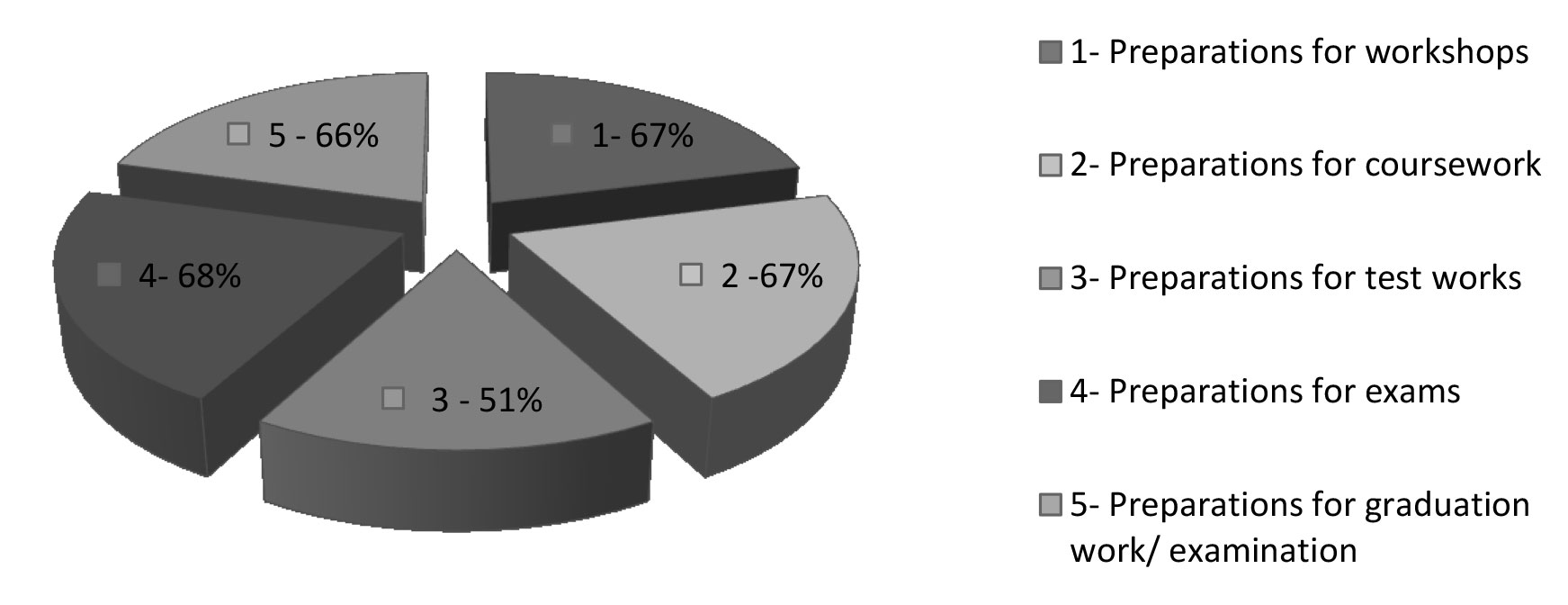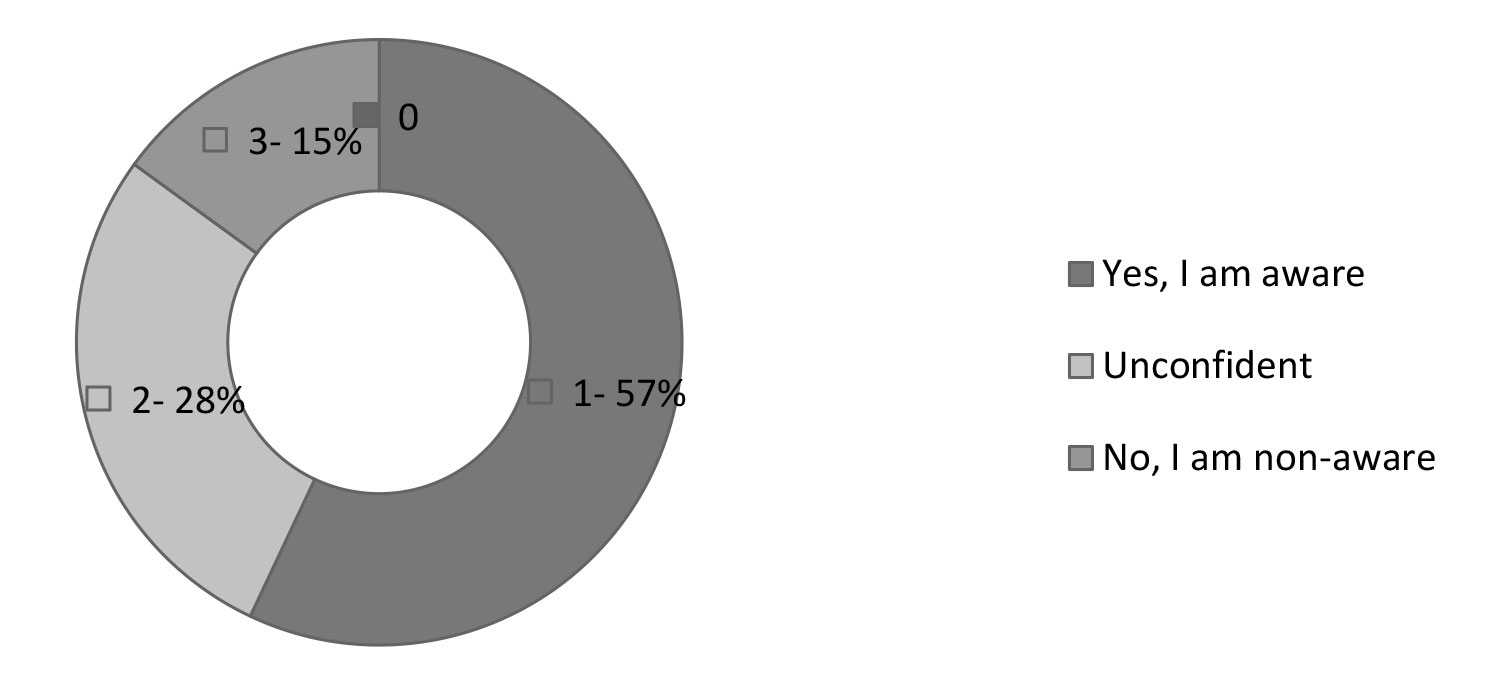Electronic information and education environment as academic communication tool
Фотографии:
ˑ:
Dr.Hab., Professor N.G. Zakrevskaya1
Dr.Hab., Professor E.V. Utisheva1
PhD, Associate Professor P.G. Bordovskiy1
E.Y. Komleva1
1Lesgaft National State University of Physical Education, Sport and Health, St. Petersburg
Keywords: communication, digital resource, educational system, academic process, professional physical education and sport specialist training system improvement.
Background. Modern digital information educational resources provide a communication channel for the communicator and target audience i.e. for the teacher and student in case of the academic educational process. It should be noted, however, that there are still many barriers for the modern digital information educational resources to be applied more actively and effectively in the educational process.
Objective of the study was to identify barriers for the modern digital information educational resources being formed and applied in the educational process.
Methods and structure of the study. The study data and analyses gave the means to formulate the key provisions required to form the modern academic digital information educational system as follows: expand the resource for the key components of the digital information educational system; monitor and analyze every element of the digital information educational system; and build up due content for the digital information educational system to facilitate the academic study and research process. We designed the relevant questionnaire survey modules to explore the above provisions.
Study results and discussion. First module of questions was designed to explore the key efficiency factors of the digital educational system. The digital information source was being ranked number one by the respondents. This factor was tested by the question ‘What are your sources of information (more than one source may be indicated)?’: see Table 1.
Table 1. Responses to the question on the sources of information, % of the sample ( n=500)
|
What are your sources of information (more than one source may be indicated)? |
1st year (n-125) |
2nd year (n-125) |
3rd year (n-125) |
4th year (n-125) |
|
University library |
58 |
61 |
46 |
38 |
|
Other libraries |
11 |
10 |
6 |
6 |
|
Digital libraries |
29 |
20 |
23 |
14 |
|
Internet |
77 |
52 |
52 |
52 |
As indicated by the above data, the first-year students mine information mostly from the university library (58%) and Internet (77%) [1]. It should be emphasized that students of every course actively apply digital sources in their academic educational process. The digital sources were found the least used (51%) for the academic progress test works versus the other academic learning process components (66%, 68% and 67%): see Figure 1.

Figure 1. Sources of information applied in the academic learning process classified by the process components:
1- Preparations for workshops
2- Preparations for coursework
3- Preparations for test works
4- Preparations for exams
5- Preparations for graduation work/ examination
The growing efficiency of and demand for the digital sources of information is verified by their application statistics in the academic educational process classified by components: see Figure 1.
The second module of questions was designed to rate efficiency of the educator-student communication forms in the academic educational process with application of the relevant educational process criteria and efficiency rates. First we tested the degrees of the students’ awareness of the educators’ websites that offer useful academic education and practical information and materials, with 72% of the sample found aware, 19% unconfident and 9% unaware of the source. The question ‘Are you aware of the educators’ websites providing useful academic education and practical materials?’ was not always responded positively: see Figure 2.

Figure 2. Responses to the question to probe the students’ awareness of the educators’ websites that offer the relevant academic education and practical materials
Having analyzed the responses (Figure 2), we found 57% of the respondents being aware of the educators’ websites and useful information they offer, 28% being unconfident and 15% unaware of such websites. The data may be indicative of the interested students being capable of mining the necessary information from these sources. The valid FSES require the academic digital informational educational system being designed to provide the means for direct and indirect [‘synchronous and asynchronous’] educator-student communication [4]. This communication aspect was tested by the question ‘How often do you make resort to email communication with your educator?’: see Table 2.
Table 2. Responses to the question on the educator-student communication via email, % of the sample, (n=500)
|
How often do you contact your educator via the email? |
1st year (n-125) |
2nd year (n-125) |
3rd year (n-125) |
4th year (n-125) |
|
A few times a week |
10 |
15 |
6 |
5 |
|
A few times a month |
9 |
8 |
8 |
14 |
|
A few times a semester |
13 |
11 |
29 |
20 |
|
A few times a year |
4 |
7 |
18 |
15 |
|
Never |
61 |
60 |
54 |
56 |
The study data and analyses were indicative of the growing demand for the academic digital informational educational system as verified by the increased application of a variety of digital communication units by the students when looking for the necessary academic materials, including: 68% reported using home computers; 28% university libraries; and 39% using their mobile phones and tablets. Furthermore, 75% of the students were found aware of the relevant digital information educational resources regularly updated by the relevant academic education and practical materials; with the first- and second-year students showing the highest demand (89%) for the textual content of the sources; and 80% of the respondents being reportedly satisfied by the content of the digital information educational resources.
Conclusion. Presently the academic digital information educational resource is applied not only as an information source but also: secures due communication of the educational process actors; improves efficiency of the academic educational process; consolidates available academic education and practical textual materials; helps build up professional, general cultural and universal competences in students; facilitates studies of the modern business communication tools to help the students master the academic and practical knowledge and skills, including the educator-student communication skills.
The study was performed under the State Order for P.F. Lesgaft NSU (Saint Petersburg) for the Research Physical Education Specialist Training System Improvement Project (on Order from the Ministry of Sports of Russia of April 07, 2015).
References
- VTsOM: dolya internet-polzovateley v Rossii vyrosla do 75 % [ARPORC: the share of Internet users in Russia has grown to 75%]. Available at: http://naipress.ru/news/socialnye-seti-tehnologii-internet/vciom-dolja-i...
- Zakrevskaya N.G., Filippov S.S., Kapustina E.V. Organizatsionno-pravovoe obespechenie razvitiya elektronnoy informatsionno-obrazovatelnoy sredy universiteta [Organizational and legal support for development of academic electronic information and educational environment]. Lesgaft NSUPESH, St. Petersburg: Uchenye zapiski un-ta im. P.F. Lesgafta, 2016, no. 4 (134), pp. 83-89.
- Osipova O.P., Kuznetsova T.M. Realizatsiya dopolnitelnykh professionalnykh programm posredstvom elektronnogo obucheniya: organizatsionny aspekt [E-learning-based implementation of additional professional programs: organizational aspect]. MSPU; Moscow Institute of Open Education. Pedagogicheskoe obrazovanie i nauka, 2015, no. 5, pp. 88-94.
- Filippov S.S., Zakrevskaya N.G., Bordovskiy P.G. et al Issledovanie gotovnosti prepodavateley k deyatelnosti v elektronnoy informatsionno-obrazovatelnoy srede universiteta [Study of teachers’ professional competency to perform in academic electronic information and educational environment]. Lesgaft NSUPESH, St. Petersburg: Uchenye zapiski un-ta im. P.F. Lesgafta, 2016, no. 8 (138), pp. 234-240.
Corresponding author: zakrevskaya_n@mail.ru
Abstract
The valid Federal State Education Standards (FSES) require the relevant digital information educational resources being offered by the education establishments since they both contribute to the academic process efficiency and pave the way for the other modern technologies to be applied by the universities. Easy access to the digital education materials and the relevant online technologies including the remote education ones is viewed as a key element of the modern education models designed to build up due general cultural, universal and professional competences in students. Good competences and skills in the modern digital resource application are paramount for the relevant communication qualities and skills being developed in the future specialists. The study considers the priority issues of the modern academic digital information educational resource as a necessary provision for the academic educational progress including the services to build up the relevant professional communication skills and qualities in the physical education and sports specialists. Subject to the study were students (n=500) of P.F. Lesgaft NSU. Objective of the study was to analyze benefits of the digital information educational resources for the universal/ professional competences building process.



